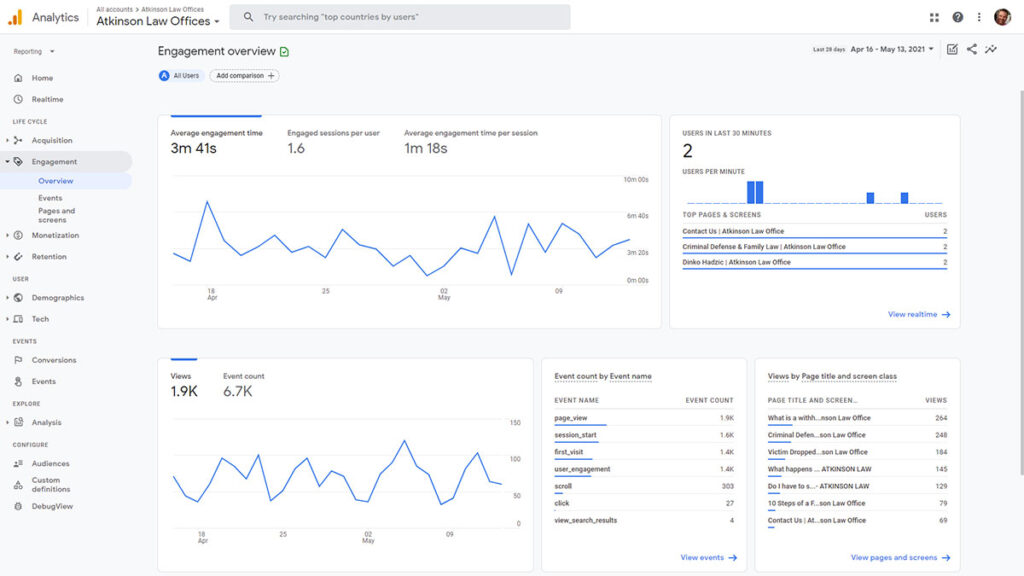After 12 long years, Google finally did it! They introduced a new Analytics property called Google Analytics 4 or GA4. We all know customer behavior is rapidly evolving and moving online. We have seen governments implement regulations for user data protection and privacy concerns such as the General Data Protection Regulation (GDPR). As more companies apply this as a standard, it is creating restrictions on user cookies and identifiers that is now causing gaps in your data making it harder to identify customer behavior. This next generation of Analytics is the solution to bridging those gaps.
With machine learning at its core, it will automatically discover anomalies that are either helping or hurting a business. We can make decisions faster by identifying a single user, and how they are interacting with a business across all platforms and devices. Instead of utilizing Universal Analytics (UA) for web and Google Firebase SDK for apps, GA4 can integrate all data streams, i.e., iOS, Android, and Web, into a single interface.
When Did Google Analytics 4 Come Out?
The official Google Analytics 4 release date is October 2020 and is now the default property when creating new Analytics accounts. Remember back in July 2019, Google announced a new beta property type called App + Web? This new, more intelligent GA4 property is built on the foundation of that App + Web property. It prepares businesses for the future of data collection and processing.
Make Smarter Marketing Decisions & Improve ROI
Google’s advanced machine learning models discover insights into customer behavior automatically, immediately alerting businesses to significant trends within their data. It will anticipate future customer actions by calculating churn probability so businesses can invest in retaining customers when unforeseen issues occur. Another predictive metric can forecast the potential revenue you could earn from a particular group of customers. Intelligently create an audience based on this metric to target higher valued customers and taste those sweet results.
Google Analytics 4 helps businesses integrate deeper across multiple Google marketing products such as Google Ads. Build audiences based on new dimensions and metrics to generate more personalized, relevant experiences for your customers. A web visitor or an app user is now an individual customer, and you will know which platform or device your customers use to interact with your business.
Since GA4 can measure web and app interactions together, it can include conversions from YouTube engaged views that occur on the web or in-app. Understanding how people convert from YouTube video views alongside conversions from Google and non-Google paid and organic channels helps you determine the combined impact of all your marketing efforts to improve ROI.
Being a beta participant, Vistaprint was able to identify rapid changes in their business at the start of the pandemic. They were able to immediately measure and analyze their customer response to their new line of protective masks. Domino’s Pizza was another participant with Jeff Kacmarek, Vice President of Marketing and Product Development at Domino’s Pizza of Canada saying that “linking the new Google Analytics to Google Ads enables us to optimize around the actions that matter most to our customers, regardless of how they interact with our brand.”
Acquire More Insights into Your Customer Lifecycle
The new Analytics utilizes an event-based data model as opposed to session-based. It gives you a customer-centric measurement system by using multiple identity spaces that provides a complete picture of how your customers engage with your business. You will have a much-improved insight into the full lifecycle of your customers from acquisition to conversion, and ultimately retention. You can now see what marketing channels are driving new customers in the user acquisition report. You can find a better understanding of their actions after converting with the Engagement and Retention reports.
The Future of Analytics is Now!
The Google Analytics 4 property is built for the long term. The new Analytics is designed to adapt to a future with or without the use of cookies and user identifiers. With a flexible approach to measurement, in the future it will utilize conversion modeling to fill more gaps in your data. Businesses can now rely on Google Analytics to provide forward-thinking to prepare for now and the future. As we like to say around here at Cyberlicious®, “Innovate or be out of date.” Enjoy your new discoveries and calmer, more intelligent business decisions with Google Analytics 4.

